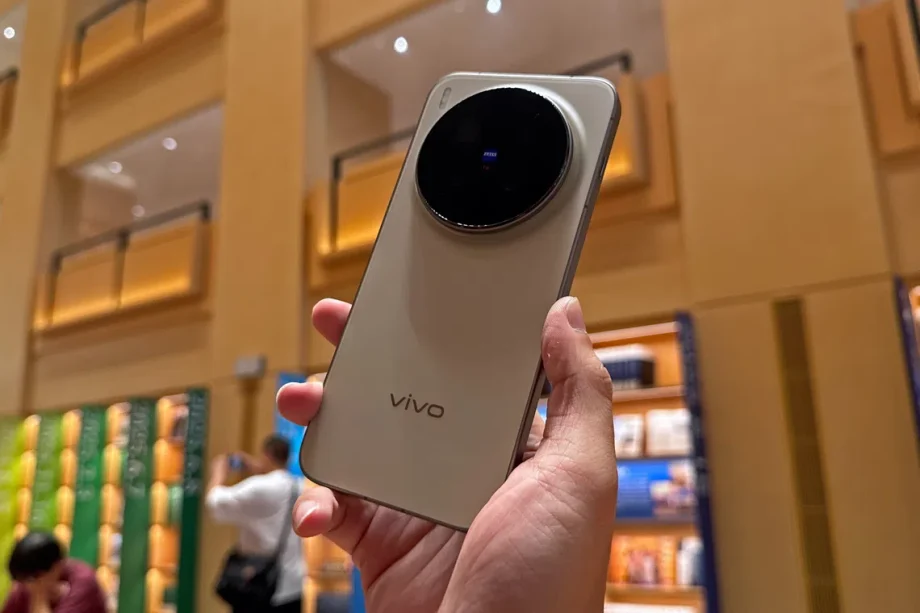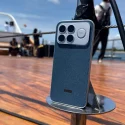In case you missed it, Vivo has launched its 2026 X-series flagship smartphones, consisting of the Vivo X300 and Vivo X300 Pro.
Right after Vivo’s marathon of a keynote that ended with Mickey Mouse and friends dazzling the crowd with an NDP-sque song and dance, we were given the opportunity to take one Vivo X300 Pro out for a short spin.
Here’s an overview of the rear camera specifications before we delve further:
|
Megapixels (default mm) |
Sensor and size |
Aperture |
|
|
Main |
50MP (24mm) |
1/1.28-inch, Sony LYT-828 |
f/1.57 |
|
Ultrawide |
50MP (15mm) |
1/2.76-inch, Samsung JN1 |
f/2.0 |
|
Telephoto |
200MP (85mm) |
1/1.4-inch, Samsung Ultra-Sensing HPB |
f/2.67 |
The highlight feature here is that the Vivo X300 Pro has a “ZEISS APO 200MP super telephoto system”. The telephoto is an 85mm lens (35mm equivalent), which is roughly 3.5x zoom if you treat its 24mm main camera as “no/1x zoom”. It’s backed by an ultra-large, 1/1.4-inch Samsung HPB sensor, and also has ZEISS T* Coating to reduce reflections. Critically, Vivo claimed it has excellent optical image stabilisation, having achieved a CIPA 5.5 rating for its telephoto shots.
Helping the cameras along is the NPU portion of MediaTek’s Dimensity 9500 chipset, which supposedly offers millisecond-level tracking and shutter response, improving its tracking stability by 200%. Vivo said it’s functional even when shooting at 480mm (approx. 20x zoom).

Testing out the Vivo X300 Pro.
Photo: HWZ
With Vivo heavily promoting its telephoto capabilities, the brand wants us to think that its entire rear camera system can handle a wide range of shooting demands, from portraiture to long-range photography. Vivo was also playing against a stacked deck, as our shooting experience was further complicated by a misty week in Shanghai, China.
Here’s what we think after 500+ photos and a full day with the X300 Pro.
Disclaimer: Photo samples below are taken from the phone’s camera, with file sizes downsampled to reduce bandwidth demand. No other edits were made. The Vivo X300 Pro unit featured is built for the Chinese market (China ROM and Chinese OriginOS).
Please do not reproduce the images without permission from SPH Media Limited.
Grasping the basics of Vivo X300 Pro
Vivo X300 Pro’s default Photo mode shooting gives you the 0.6x zoom (15mm) for ultrawide and 1x zoom (24mm) for main camera. By playing around with its default photo mode, we realised that Vivo also offers digital zoom at various stops, using the following cameras:
- 1.5x zoom (36mm) and 2x zoom (48mm) are from its 24mm main camera
- 3.5x (85mm) is an optical zoom, which can go to 5.6x zoom (136mm) and 7x zoom (170mm)
- The camera can also go up to 10x zoom (242mm) 20x zoom (485mm), and 30x zoom (785mm)
From the photos above, you can tell that the Vivo X300 Pro has all-rounded performance in daytime, indoors, or even Super Macro shots. Colours rarely struggle unless it’s really dim indoors (like the food shot), but they generally have no issues auto- or manually focusing on your subjects in the picture.

Portrait mode offers six different ZEISS bokeh to give your lens flares more oomph.
Screenshot: HWZ

The most obvious of the bunch is Cine-flare. Here, it shows up as orange rings blasting out of the backlight, and even eclipsing the foreground’s tabletop alarm clock. It looks fake, but cool nonetheless.
Photo: HWZ.
However, using its full 0.6x to 30x zoom is actually not the most optimal way to make the most of a Vivo X300 Pro. That’s because of its dedicated Portrait mode shooting, which is limited to 24mm, 35mm, 50mm, 85mm, and 135mm shortcuts. In exchange for sticking to popular and classic zoom ranges with its Portrait mode shooting, you get to pick from six different bokeh styles created by ZEISS for your portrait shots.
Portrait worthy?
Perhaps portrait shooting is the Vivo X300 Pro’s strongest suit. With a variety of photo samples using different subjects, exposure settings, and in both indoor/outdoor situations, it’s clear that the phone only really struggles when it’s trying to artificially separate the subjects’ hair from the background (and even then, it only bungles up occasionally).
Portrait mode also dials in “Radiant” as its default beautification filter, which explained why the East Asian skin tones portrayed in these samples are nothing short of flattering (all were taken using Radiant, including the cat). Thankfully, Vivo X300 Pro also has milder beautification filters available, which include “Realistic” and “None”.
20x zoom is overkill, but welcomed
We have two high-zoom examples (one portrait orientation, one landscape) to showcase the difference between the phone’s widest cameras (15mm and 24mm) and Vivo’s 20x zoom (485mm) on the X300 Pro. The results are quite stunning in both attempts.
However, we believe these shots were assisted by its onboard algorithms to bring out details that are otherwise impossible to capture, even with other high-end Android smartphones. Also, the sky is overcast, meaning Vivo lacked the advantage of bright, clear skies to fill in details that AI cannot (and the resulting image was brighter than what we experienced on-site).
We think this perfectly demonstrates why Vivo is so proud of its Samsung HPB imaging sensor on its 200MP telephoto camera. Yes, it’s possible that it did receive a lot of AI gifting in its 20x zoom, but the way it catches tiny details (like the dust layered atop the artwork in the drop-off point) makes us believe that the 200MP sensor is actually capable of long-distance capture, and it’s not only software at work.
Vivo will not go quietly into the night
The only notable weakness in the Vivo X300 Pro’s night shooting capabilities is that portraits can be very challenging, even with its CIPA 5.5-rated image stabilisation. That’s because a steady smartphone doesn’t make for steady subjects; if they move during a night shoot, the photos turn out as a blurry mess.
However, that’s not a handset problem. As you can see from these samples, Vivo X300 Pro has no qualms with balancing out overblown subjects that are world-famous, highly saturated, and blindingly bright at times. We fully expected to lose details inside the street lamps, or see nothing but a muddle of people trying to squeeze their way into a tourist trap.
Instead, we got well-lit night shots, and you can even count the number of people in the crowd (not that you should). We made doubly sure by counting the windows in the buildings, just to check if any were accidentally smart-erased by aggressive software tuning. Colour us impressed.
More about the Vivo X300 Pro

Vivo X300 Pro.
Photo: HWZ
Since this is a Chinese ROM Vivo X300 Pro with software made for the Chinese market (no Google Play installed by default, and Vivo’s own AI agent instead of Google Gemini, etc.), we could only stop at assessing its imaging performance and wait for its global/international version to arrive.
We’re hoping that it wouldn’t take long before we can start on a full review, now that Vivo’s 2026 Android flagship phones are already registered with the local authorities. Until then, the Vivo X300 Pro’s debut availability is limited to China. More information about its features and specs can be found in our first look article.






